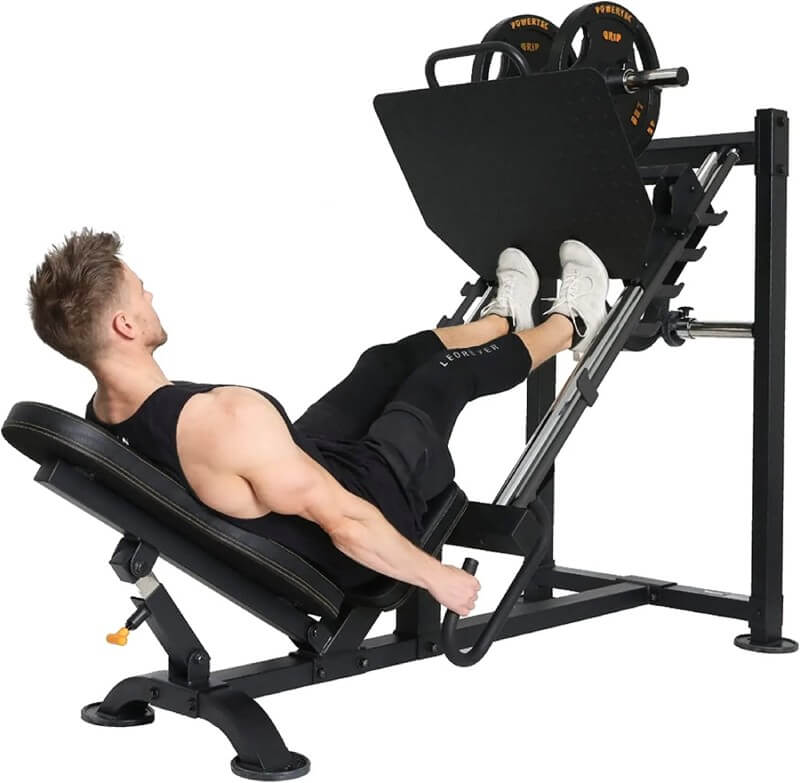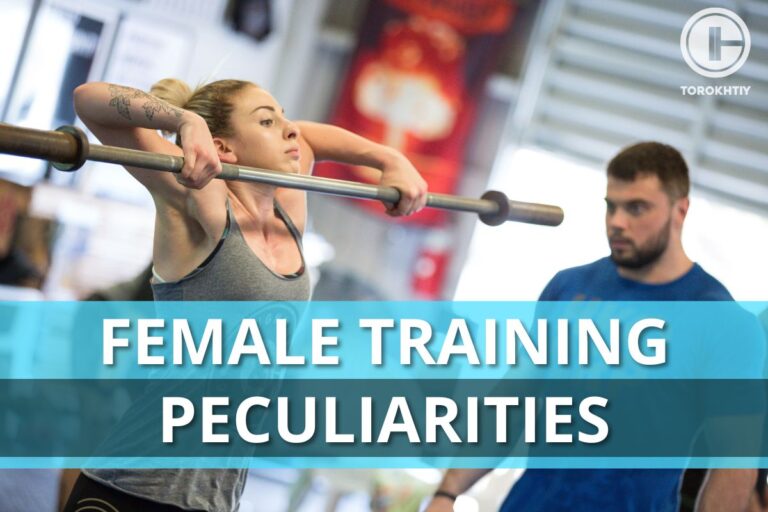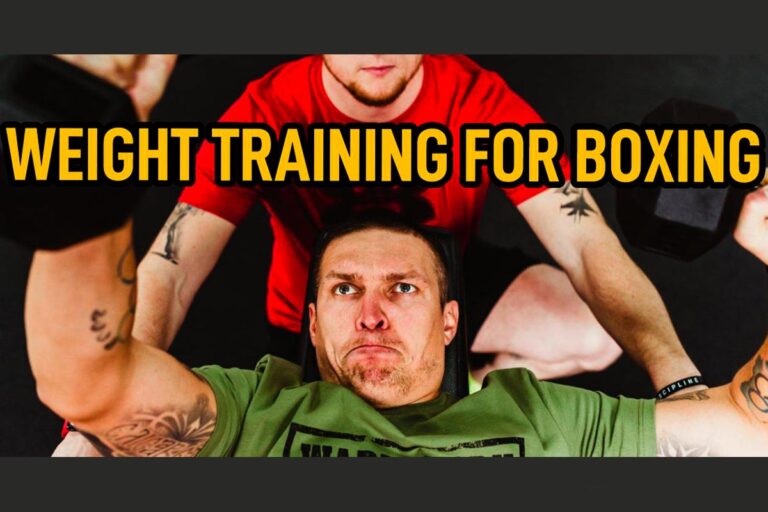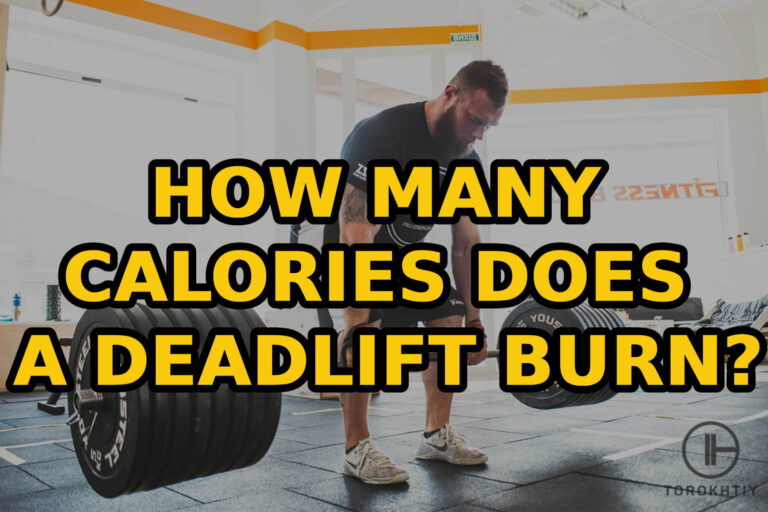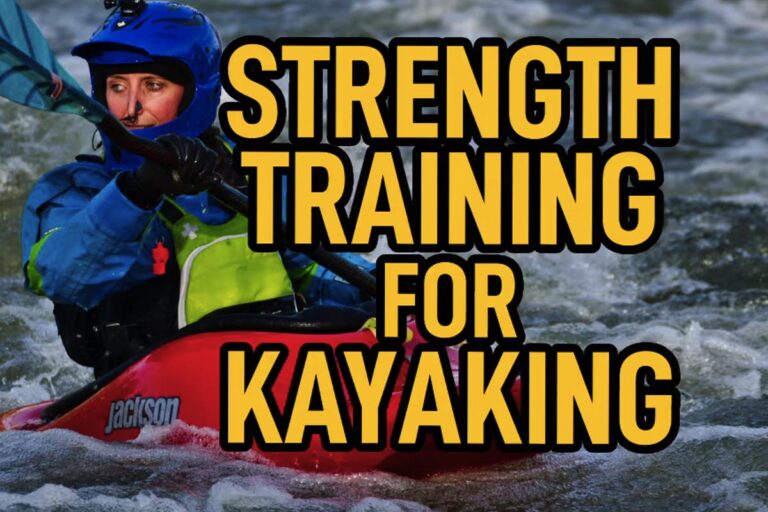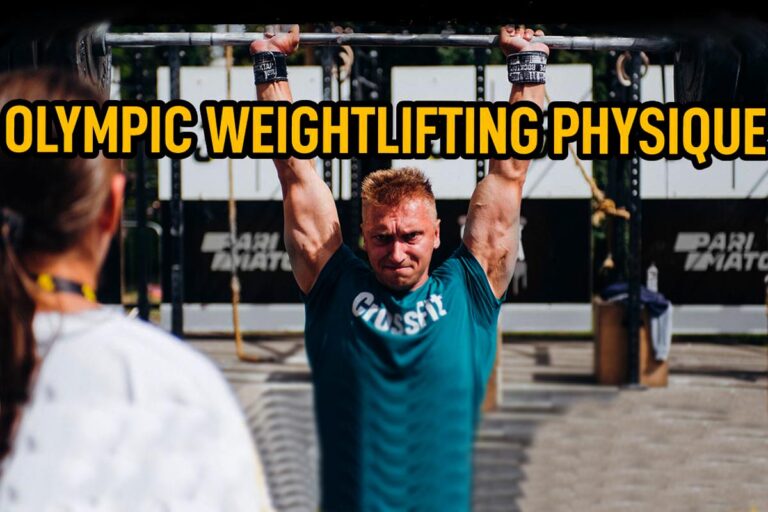Hack Squat vs Leg Press: Which One Is Better?
Most everyday gym-goers find it hard to choose between a hack squat vs leg press. You can find these exercise machines in just about every commercial gym, and they’re among the best solutions for developing your glutes, hamstrings, and quads.
Unfortunately, most people don’t know much about these exercises, which is why they often choose the one that doesn’t suit their specific needs. So, we decided to help you out by analyzing every difference between hack squat and leg press. We’ll also suggest some of the best equipment on the market.
The main difference between hack squat vs leg press is that with the hack squat, the weight is loaded on the person’s shoulders. By comparison, leg press loads weight on a platform, which you have to push away.
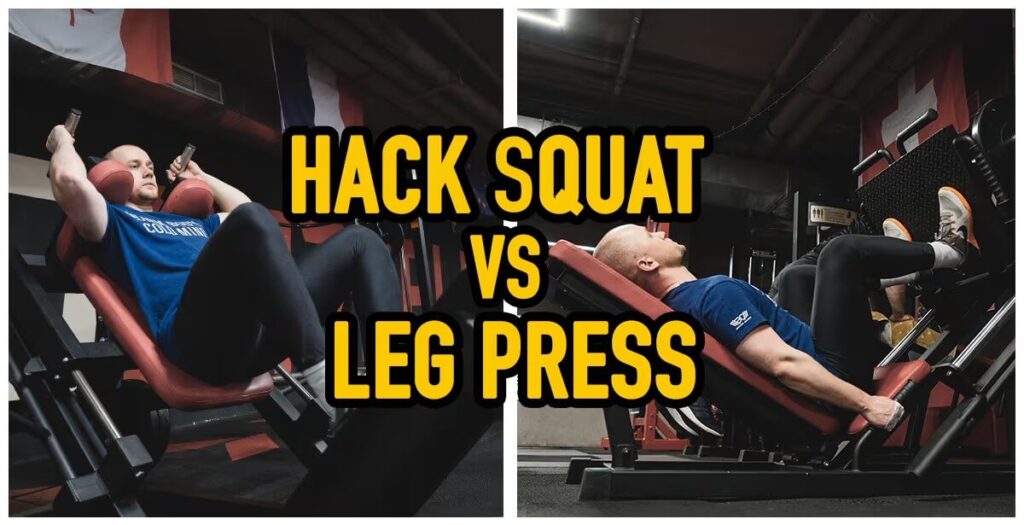
What Is a Hack Squat?
The hack squat is a variation of a regular squat. It puts your back in a reclined position, removing any pressure that you feel during the traditional squats. As such, this machine reduces the chance of injury, which is otherwise common during this type of workout. A study also shows that the two squat workouts have different impacts on your trunk.
Another major benefit the hack squat provides is that it engages more muscles than the leg press and some other leg exercises. This makes it an excellent choice if you have limited time to train different muscle groups separately. It’s extremely versatile, so you can use it as the primary focus of your training or as an assisted exercise.
The hack squat is also lauded by many bodybuilders for helping with muscle hypertrophy. One of the most notable figures who performed the hack squat in a fairly frequent manner was an IFBB Pro, Tom Platz, who was adequately nicknamed the “The Quadfather”
It’s also interesting that machine squats provide more benefits than free-weight squats.
Best For
Here are a few situations when hack squat is the optimal choice:
- For people who need a more complex leg workout as it also develops core muscles besides legs.
- For those looking for an exercise with a high carry-over to barbell squats.
Positives:
Could be better:
Our Recommended Hack Squat Machine
The Plate-Loaded Linear Hack Squat Machine is one of the best pieces of equipment in this category. It places your body at a 35-degree angle, thus reducing the impact on your spine. Unlike similar products, this machine is much better at accommodating athletes of different heights.
This hack squat machine features a weight carriage that slides on guide rods and linear bearings. All parts are made from steel alloy, ensuring longevity and durability. Weight sleeves are 9.75 inches long, and you can use them to load Olympic-style plates.
You can easily set up the equipment or quickly fold it for transport. The product comes with a one-year warranty, but it’s also worth noting that the buyer doesn’t get any plates with the purchase.
What Is a Leg Press?
Truth be told, there are some similarities between a hack squat and a leg press machine. Both of them put your back in a reclining position, trying to isolate leg muscles during the workout. However, unlike the hack squat equipment, leg press machines put your legs at a 90-degree angle compared to your body.
According to many fitness and weightlifting enthusiasts, the leg press is the most important exercise in a leg workout. Aside from strengthening your glutes and thighs, this type of machine can also help your calves and hamstring. The product is especially fantastic for muscle hypertrophy focusing on your quadriceps.
However, a study from 2008 shows that the impact on muscles can vary based on the pressing angles. There are major differences between standard leg press and declined leg press, which is another thing to consider when buying one of these bad boys.
If you’re looking to improve speed strength, you should try exercises other than the leg press.
Best For
Here are a few situations where leg press shines:
- For people who have trouble retaining the perfect form with other leg exercises.
- For those who need assistance exercise for back squats as it improves the strength of quads and their development.
Positives:
Could be better:
Our Recommended Leg Press Machine
If you’re looking for a great leg workout station, you should definitely consider Powertec Fitness Leg Press Machine. The product is made by one of the biggest fitness brands, Powertec, which has been in the business since 1997. Their products are generally reliable and made from the highest-quality materials.
When you buy this machine, you get different warranties for specific parts, ranging from one to five years. You can start your workouts with as little as 60 lbs. and push all the way to 1,000 lbs. The Powertec Fitness Leg Press Machine also has a dual safety system, allowing you to exercise at home without a spotter.
Hack Squat vs Leg Press
Choosing between a hack squat or leg press is often tricky. You can find these machines in just about any gym, and they’re both excellent for leg development. In an ideal situation, you should use them interchangeably for a more complete workout.
On the surface, it even seems they have the same purpose since these two machines force an athlete to press the plates with both legs in a steady motion. However, body placement is what separates the two, placing emphasis on different muscles and movements.
1. Design and Parts
Before we analyze the specific features of these two products, let’s go through their design and parts.
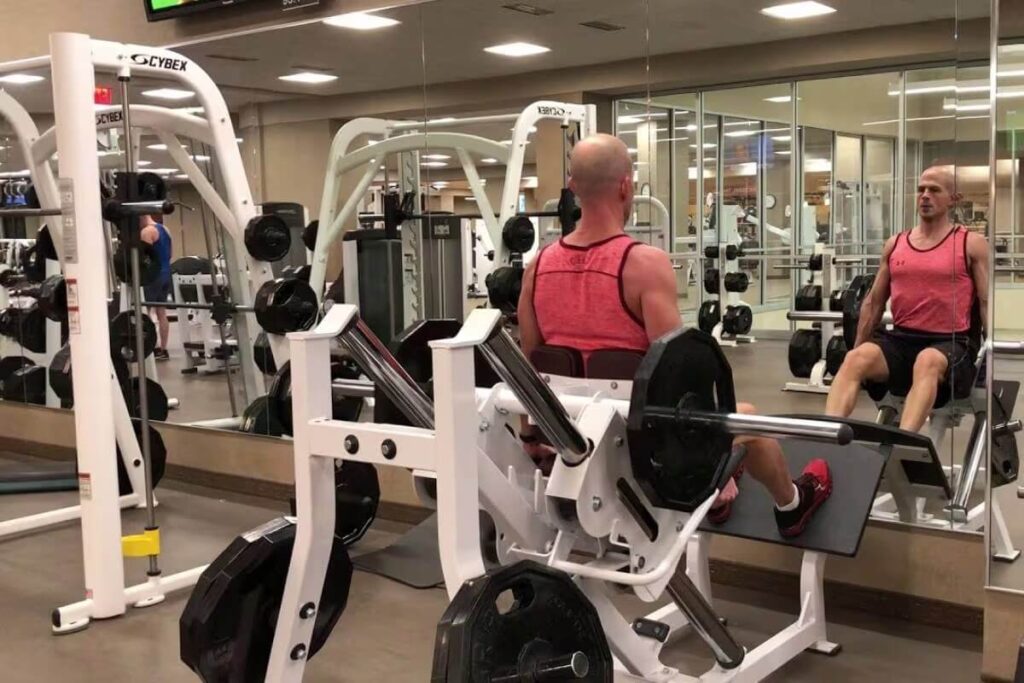
Hack Squat
Hack squat machines have padding for your back and shoulders, which is important since the machine will be pressing on your upper body. In addition, there are two handles close to the shoulder pads that help stabilize the body. The product also features foot support at the bottom that you push against to complete a rep.
Hack squat products have two parallel rails allowing the back support sled to go up and down. Weights are commonly placed behind the back, on horizontal bars. The main thing that separates one hack squat machine from another is the angle of the sleds. Most of them are placed at 45 degrees, but you also have products that are at 70, 80 degrees.
Leg Press
Leg press machines can also vary based on the angles. The less common option places gym-goers in a seating position with back and head padding behind them. Athletes push the footplate horizontally to execute a repetition.
The more common machine is the one where your legs are at 45 degrees upwards. This time around, there’s much more pressure on the legs forcing you to push against the plate to finish a workout (in other words, less time for relaxing).
The footplate is positioned on the sliding rails. In most cases, there are two bars on the side of the footplate where you can place weights. The machine also features two assist handles close to the seat that helps you keep your back and neck in an optimal position.
2. Joint Focus
When analyzing a leg press vs hack squat, it’s always best to start from joints. In the end, if you have a long injury history, the last thing you need is to overburden certain parts of your body.
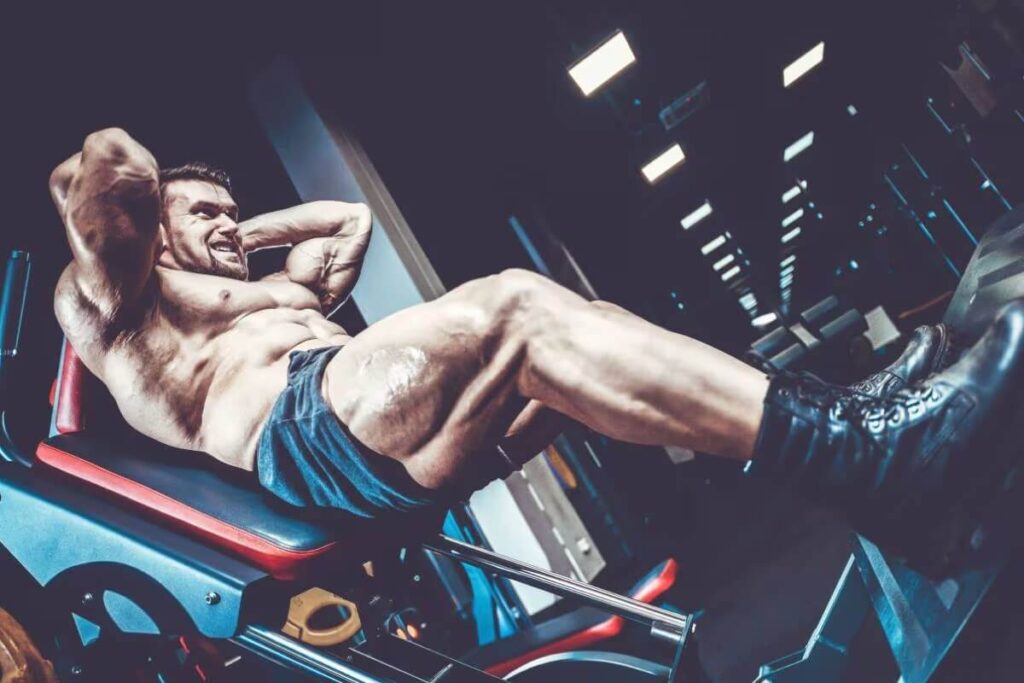
Hack Squat
The hack squat generally requires a much wider range of motion. The exercise is geared toward experienced gym-goers, and it requires excellent control and balance. During a workout, you’ll do a full range of motion for your knees, going from an upright position to a squat. As you’re fully bending your knees, there’s also an enormous emphasis on hip and ankle joints.
Leg Press
Leg press machines are much more lenient, requiring less joint movement. The equipment forces high utilization of knee joints, although the range of motion isn’t as wide as with a hack squat. The two machines have similar impacts on hips, while the leg press requires moderate hip movement (compared to a wide range of motion on hack squats).
3. Muscle Focus
Based on the previous entry, you can easily tell that the hack squat has higher requirements. The wider range of motion allows the activation of additional muscle groups, which is why a hack squat is generally considered a complete workout. This is especially noticeable when you switch from a hack squat to a leg press.
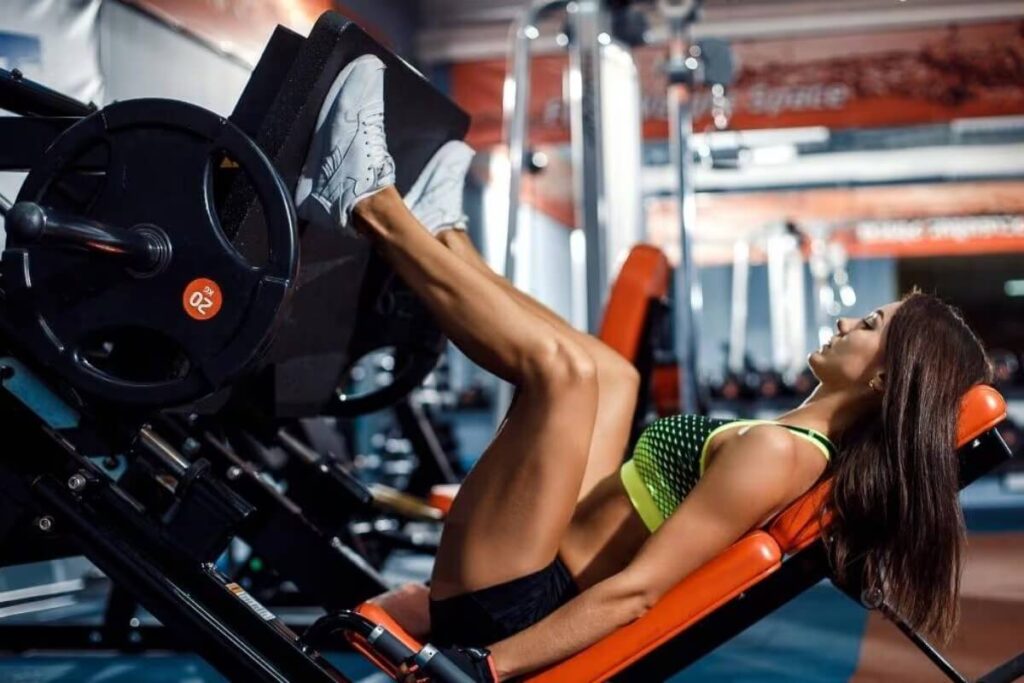
Hack Squat
The hack squat builds numerous muscles, including glutes, quads, adductors, abdominals, calves, and back muscles. Unlike the leg press, it doesn’t isolate legs and, instead, has a much more significant impact on your core. During the workout, there’s a lot of hip and knee flexion, forcing glutes and quads to their limits.
Hack squats also require strong adductors. These muscles allow you to go from a downward, squatting position to an upright position, while also helping you strengthen the hips. Given that the exercise requires good posture and balance, there will also be some pressure on the spinal erectors and abdominal muscles.
Leg Press
On the other hand, the leg press “only” works the glutes, quads, calves, and abductors. The workout is predicated on leg and knee flexion, forcing these muscles to be the main moving forces. As the weights press down on your legs, you need strong adductors to strengthen them up and finish a repetition.
During the leg press, there’s also a small emphasis on calves. Specifically, these muscles are crucial for knee and ankle extension.
4. Weight Utilization
Due to different positions, a leg press and a hack squat utilize weights in completely different manners. As previously mentioned, both of them are major upgrades to squats, as they reduce spinal loading. However, if you have a troubled back, it’s much better to go with a leg press.
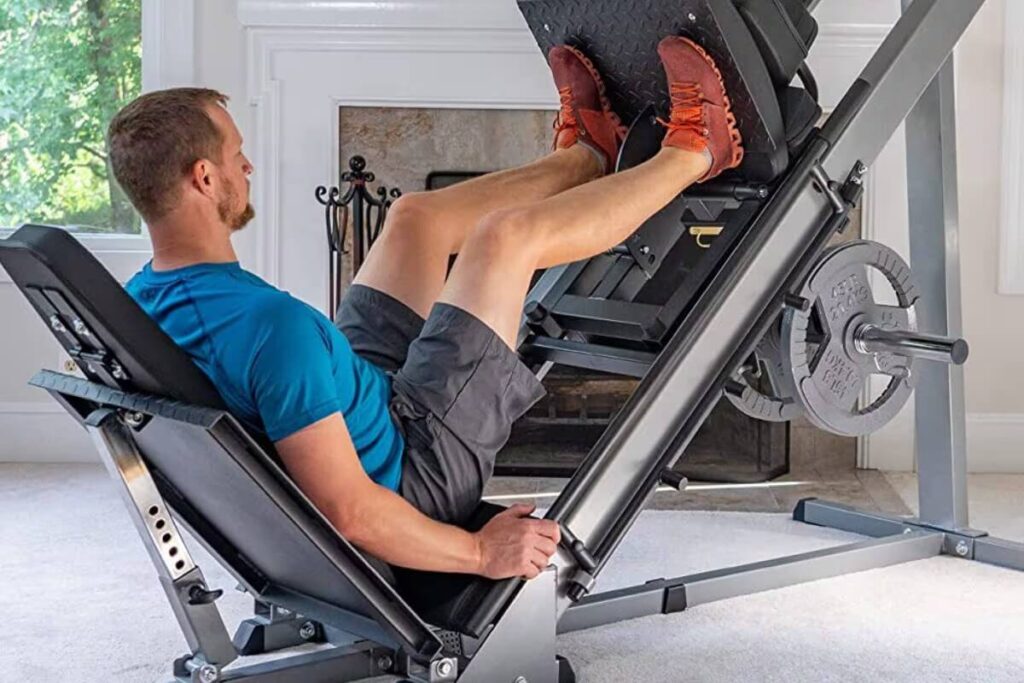
Hack Squat
When doing this exercise, the weights are placed on your back. They’re pushing down on your shoulders and legs, thus creating resistance. So, when you squat down, you need to push upward to finish a rep.
Given that a hack squat provides more body support than traditional squats, you can lift much more weight. However, to get the most from your workouts, you’ll need a strong torso, given the high axial load.
Leg Press
Unlike hack squat workouts, which sometimes feel as if your whole body will be squashed, leg press doesn’t put as much pressure on you. Of course, you still need to press weights to finish reps, but the exercise isn’t as arduous.
As a result, a person can lift much more during leg press. You’re not limited by the strength of your torso, which could be the case with hack squats.
5. Impact on Strength and Power
Obviously, when comparing a leg press vs a hack squat, you should also take into consideration how each one of these affects your strength and power.
Both of these exercises are great for increasing your overall strength. The leg press is a slightly better option out of the two, as it allows you to load more weight. However, whether or not you’ll use a leg press or a hack squat in your daily routine depends on your general workout goals.
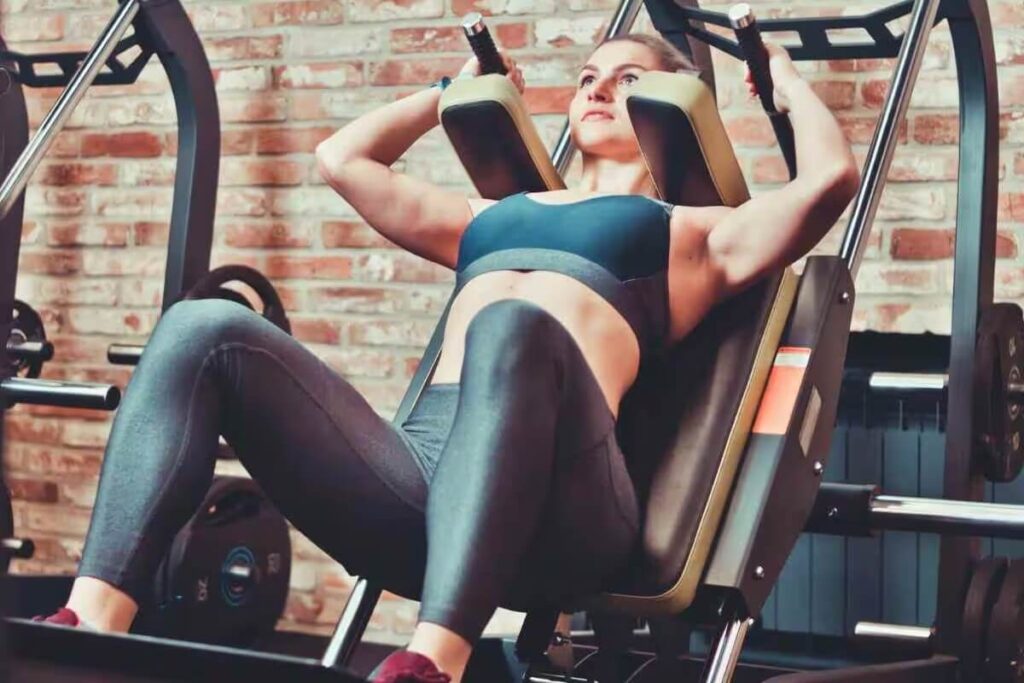
Neither one of these machines are good for power. These exercises are predicated on controlled movements with steady pacing, so they’re not as explosive as some other workouts. Nevertheless, we can recommend both a hack squat and leg press machine for glutes and quad hypertrophy.
6. Difficulty and Challenge
Almost any expert will tell you that hack squats are much harder to perform. Even if you use the same weights, there are some differences in how we use these two pieces of equipment.
Hack Squat
The main issue with hack squats is that you can feel wobbly while doing it. The machine puts a lot of pressure on your shoulders, back, and legs from above. So, as you get fatigued, it isn’t uncommon for a person to start moving their legs on the footplate, trying to reestablish balance.
It’s imperative that you have good posture while working out on this piece of equipment. Your body should be straight and parallel to the shoulder pads and the footpad. You also have to press with both legs simultaneously for maximum effect and to avoid injuries.
The hack squat is very similar to the traditional squat, as it can put tons of pressure on your body, so a solid brace is a must. The exercise can be extremely demanding, but in our opinion, it’s has the potential to be more rewarding than the leg press.
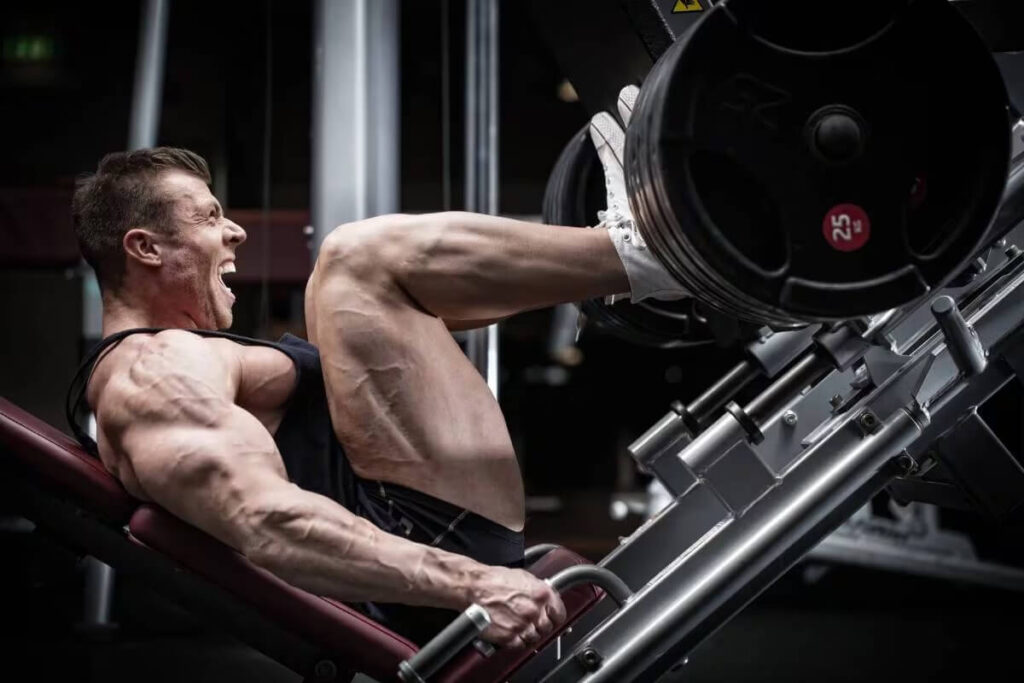
Leg Press
Although the hack squat can provide more benefits, the leg press also has its charms and should be a part of your exercise routine.
The exercise is fantastic for isolating your legs. You also don’t rely on your abdomen for pushing, as is the case with hack squats. In that regard, you don’t feel as fatigued when doing leg presses. Still, you can’t take full breaks between repetitions as you have all this weight on your legs when they’re outstretched.
Aside from weights, the machine angles can also affect your experience with hack squats and leg presses.
FAQ
Is the Hack Squat Better Than the Leg Press?
It’s hard to tell which one of these two exercises is better as they both have their pros and cons. In theory, you can implement both of them in your workout routine.
Leg press focuses more on the legs, while hack squat also works your core muscles. Both of them are a good replacement for traditional squats, as they alleviate the pressure on your back.
Can Leg Press Replace Hack Squat?
Although both of these exercises are fantastic for quad hypertrophy, they’re far from interchangeable.
In particular, these two workouts have a completely different impact on secondary muscle groups. While a leg press is fantastic for legs, a hack squat also helps build your core. This can especially be important for professional athletes who are looking to improve certain movements through hack squatting.
Should I Do a Hack Squat and Leg Press on the Same Day?
Given that these two exercises put emphasis on the glutes and quads, it might seem redundant to do them on the same day.
However, as you’re doing legs anyway, it isn’t bad to add some versatility. If anything, adding more exercises to your workout regimen can make things more fun. In other words, doing leg presses and hack squats during the same workout can reduce mental fatigue.
Conclusion
Both leg presses and hack squats are fantastic exercises. If this is your first time going to a gym, we would recommend starting with leg presses. Hack squats, on the other hand, are more challenging, making them a better option for experienced athletes. Keep in mind that your results might also vary based on the gender.
Which one of these two exercises do you prefer? Do you use them simultaneously during your leg days? Share your preferences in the comments below!
Also read:
- How Much Does a Leg Press Weigh
- What Muscles Does Leg Press Work
- What Is Leg Press Good For
- Leg Extension vs Leg Curl
- Best Leg Press Machine
References:
- Trunk Muscle Activation in the Back and Hack Squat at the Same Relative Loads // Pubmed: https://pubmed.ncbi.nlm.nih.gov/28704312/
- A Comparison of Machine versus Free-Weight Squats for the Enhancement of Lower-Body Power, Speed, and Change-of-Direction Ability during an Initial Training Phase of Recreationally-Active Women // Ncbi: https://www.ncbi.nlm.nih.gov/pmc/articles/PMC6835729/
- Analysis of muscle activation during different leg press exercises at submaximum effort levels // Pubmed: https://pubmed.ncbi.nlm.nih.gov/18545207/
- The Impact of Back Squat and Leg-Press Exercises on Maximal Strength and Speed-Strength Parameters // Pubmed: https://pubmed.ncbi.nlm.nih.gov/26439782/
- Exploring differences in electromyography and force production between front and back squats before and after fatigue and how this differs between the sexes // Eprints: https://eprints.lancs.ac.uk/id/eprint/168175/1/2021CatherineRattleyMedicalSciences.pdf
Why Trust Us?
With over 20 years in Olympic Weightlifting, our team does its best to provide the audience with ultimate support and meet the needs and requirements of advanced athletes and professional lifters, as well as people who strive to open new opportunities and develop their physical capabilities with us.
By trusting the recommendations of our certified experts in coaching, nutrition, dietology, and sports training programming, as well as scientific consultants, and physiotherapists, we provide you with thorough, well-considered, and scientifically proven content. All the information given in the articles concerning workout programming, separate exercises, and athletic performance, in general, is based on verified data. We ensure that you can rely on our professionals’ pieces of advice and recommendations that can be treated as personalized ones which will benefit you and fully meet your needs.
The product testing process is described in more detail here
Author: Ihor Shymechko
Pro Olympic Weightlifter, Coach
Best Results: Snatch – 208 kg,
C&J – 240 kg
Ihor has been a professional weightlifter since 1996, boasting over two decades of competition experience. His notable achievements include clinching the European Championship in 2009 and securing a silver medal in the 105kg division at the Senior World Championships in 2011. Ihor represented his country in the 2008, 2012, and 2016 Summer Olympics. After retiring from competitive weightlifting, he transitioned to coaching, leveraging his vast experience to guide athletes who now compete on both national and international stages.


